
The history of film as an artistic medium chronicles the development of a visual art form created using film technologies that began in the late 19th century.

Bushrangers were originally escaped convicts in the early years of the British settlement of Australia who used the bush as a refuge to hide from the authorities. By the 1820s, the term had evolved to refer to those who took up "robbery under arms" as a way of life, using the bush as their base.
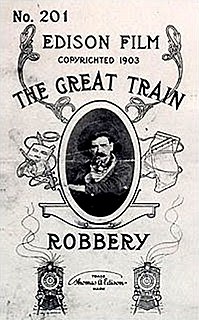
The Great Train Robbery is a 1903 American silent Western film made by Edwin S. Porter for the Edison Manufacturing Company. It follows a gang of outlaws who hold up and rob a steam locomotive at a station in the American West, flee across mountainous terrain, and are finally defeated by a posse of locals. The short film draws on many sources, including a robust existing tradition of Western films, recent European innovations in film technique, the play of the same name by Scott Marble, the popularity of train-themed films, and possibly real-life incidents involving outlaws such as Butch Cassidy.
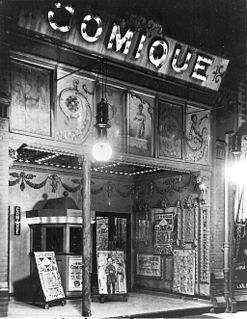
The nickelodeon was the first type of indoor exhibition space dedicated to showing projected motion pictures in the United States. Usually set up in converted storefronts, these small, simple theaters charged five cents for admission and flourished from about 1905 to 1915.
The year 1903 in film involved many significant events in cinema.
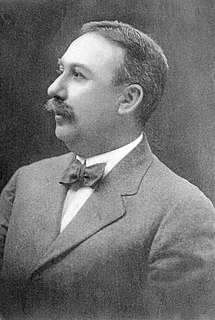
Edwin Stanton Porter was an American film pioneer, most famous as a producer, director, studio manager and cinematographer with the Edison Manufacturing Company and the Famous Players Film Company. Of over 250 films created by Porter, his most important include: What Happened on Twenty-third Street, New York City, (1901), ; Jack and the Beanstalk (1902); Life of an American Fireman (1903); The Great Train Robbery (1903); The European Rest Cure (1904); The Kleptomaniac (1905); Life of a Cowboy (1906); Rescued from an Eagle's Nest (1908); and The Prisoner of Zenda (1913).

The Cinema of Wales comprises the art of film and creative movies made in Wales or by Welsh filmmakers either locally or abroad. Welsh cinema began in the late-19th century, led by Welsh-based director William Haggar. Wales continued to produce film of varying quality throughout the 20th century, in both the Welsh and English languages, though indigenous production was curtailed through a lack of infrastructure and finance, which prevented the growth of the industry nationally. Despite this, Wales has been represented in all fields of the film making process, producing actors and directors of note.

William Haggar was a British pioneer of the cinema industry. Beginning his career as a travelling entertainer, Haggar, whose large family formed his theatre company, later bought a Bioscope show and earned his money in the fairgrounds of south Wales. In 1902 he began making his own short fictional films, making him one of the earliest directors in Britain. His films were shown worldwide and his short Desperate Poaching Affray is believed to have influenced early narrative drama in American film, especially in chase genre. As a director Haggar is recognised for his use of editing and the depth of staging in his melodramas and crime films.
This article is about the particular significance of the year 1903 to Wales and its people.
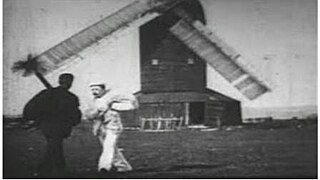
The Miller and the Sweep is a 1898 British short black-and-white silent comedy film, directed by George Albert Smith, featuring a miller carrying a bag of flour fighting with a chimney sweep carrying a bag of soot in front of a windmill, before a crowd comes and chases them away. The film, according to Michael Brooke of BFI Screenonline, "was one of the first films made by G.A. Smith, shortly after he first acquired a camera," and is also, "one of the earliest films to show a clear awareness of its visual impact when projected."

Justus D. Barnes, named George Barnes in some sources, was an American stage and film actor. He is best known for his role in the 1903 silent short The Great Train Robbery, which the American Film Institute and many film historians and critics recognize as the production that first established the Western genre, setting a new "narrative standard" in the motion picture industry. Kim Newman says it is "probably the first Western film with a storyline".
Arthur Cheetham was an English-born Welsh filmmaker, who became the first of his profession to be based in Wales. His legacy is a collection of eight surviving films, including the oldest extant British football 'short' from 1898. Cheetham, along with fellow cinematic pioneer, William Haggar, are recognised as the only Welsh-based film makers of importance before the First World War.
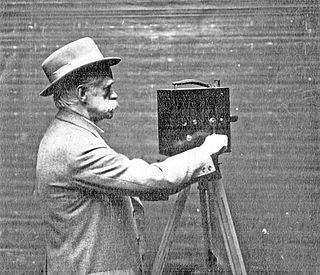
Frank Mottershaw (1850–1932) was an early English cinema director based in Sheffield, Yorkshire. His films, A Daring Daylight Burglary and The Robbery of the Mail Coach, made in April and September 1903, are regarded as highly influential on the development of Edwin Porter’s paradigmatic "chase film" The Great Train Robbery of December 1903, and often claimed as the prototype of the action film. The uniqueness of Mottershaw's A Daring Daylight Burglary is seen in the way it tracks a single action through changing locations. Henry Jasper Redfern and Mottershaw made the first motion pictures filmed outdoors in Sheffield.
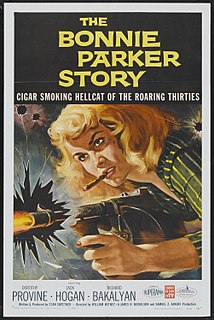
The Bonnie Parker Story is a 1958 crime film directed by William Witney. It is loosely based on the life of Bonnie Parker, a well-known outlaw of the 1930s. The film stars Dorothy Provine as Parker; Parker's actual historical partner, Clyde Barrow, is renamed Guy Darrow for the film's story, and played by Jack Hogan. The film was released by American International Pictures as a double feature with Machine Gun Kelly.
Daniel Boone; or, Pioneer Days in America is a 1907 American silent film directed by Wallace McCutcheon and Edwin S. Porter for the Edison Manufacturing Company. It starred Florence Lawrence, often called "the first movie star."
A Daring Daylight Burglary is a 1903 British short silent film directed by Frank Mottershaw. The film was produced by the Sheffield Photo Company, and features members from the Sheffield Fire Brigade as part of the cast. Mottershaw also employed actors from local music halls and paid them ten shillings for a day's work.
The Bold Bank Robbery is a 1904 short crime film produced and distributed by the Lubin Manufacturing Company. The silent film depicts a group of burglars who plan and execute a successful bank heist. Company employee Jack Frawley was the film's director, also coming up with the story and serving as cinematographer; the cast's identities are unknown. The silent film was the first Lubin Manufacturing Company release to feature an original narrative.

Lyman Hakes Howe was an American entertainer, motion picture exhibitor and early filmmaker. He entered the entertainment industry in 1883, began touring with a phonograph in 1890, and showed his first movies in 1896. He was the first person to use a phonograph for background sound effects in movies. A Pennsylvania State Historical Marker in the city of Wilkes-Barre––where Howe was born, raised and spent his adult life––is dedicated to him. Howe was active in the eastern United States and Canada. Although Howe died in 1923, his film company continued operating for a number of years after his death, into the Great Depression.

The Lost Child is a 1904 American short silent comedy film produced by the American Mutoscope & Biograph Company and directed by Wallace McCutcheon, Sr.

The 'Teddy' Bears is an American silent film directed by Edwin S. Porter and Wallace McCutcheon, and produced by the Edison Manufacturing Company starting as the fairy tale Goldilocks and ending as a political satire of United States President Theodore Roosevelt.













